|
What is art? It's not a question most people seem easily able to answer, but they're all too happy to tell you what it isn't. For many, too many, what doesn't constitute art is anything you can prefix with the word 'modern'. Cutting a cow in half and placing it in formaldehyde is not art, wrapping the Reichstag in fabric is not art, and painting "R. Mutt" on a urinal is most definitely not art. But why not? Surely one of the things that Pop Art taught us (oh I forgot, comic book reproductions and silk-screen prints of soup cans are apparently not art either) is that just about anything be seen as art, and that presenting it as such can prompt us to look at an image or object in a completely different way.
Environmental art has its own unique pleasures that spring from their scale and the location in which they are installed. The temporary transformation of a familiar landscape or building is for me an always intriguing prospect, one whose sheer size means that the work becomes something that surrounds you, that you can walk through, that fills your field of vision. It's a process of living surrealism, where something you encounter every day is altered in a way that can be experienced as well as seen. It's why I love it so much when it snows, nature's own temporary transformation of landscape that for a short time changes how everything looks, sounds and feels, and in a way that you can directly interact with.
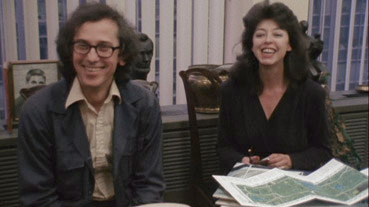
I mention the Reichstag above not just because it's the sort of thing that provokes conservative traditionalist ire, but because it was the work of Bulgarian and French émigré artists Christo and Jeanne-Claude, a husband-and-wife team who have created a number of extraordinary environmental artworks on an often grand scale. Favourites include wrapping the coast of Little Bay in Sidney with synthetic fabric, erecting a 400-meter long cloth across the Rifle Gap valley in Colorado's Rocky Mountains, surrounding eleven islands in Miami's Biscayne Bay with 603,850 square metres of pink polypropylene floating fabric, and simultaneously erecting a total of 3,100 yellow and blue umbrellas in California and Ibaraki, Japan.
One thing each of these works appear to have in common, apart from their fleeting existence and the expense and effort they take to effect, is that following initial, often vocal opposition, once completed they tend to elicit a more positive response and attract large numbers of visitors from around the world. In 1979, Christo and Jeanne-Claude proposed a work that would create a "golden river" in New York's Central Park consisting of over seven thousand fabric-panelled metal gates, a self-funded project that after some discussion was rejected by city officials. The couple never gave up on the concept, and twenty-six years later it finally got the go-ahead when multi-billionaire Michael Bloomberg, a big fan of Christo and Jeanne-Claude's work, was elected as the city's Mayor.
A quick aside. A few years ago, I was asked by a local artist to make a film documenting the design and construction of a statue that had been commissioned to mark the opening of a new Biochemistry wing at a nearby University. Excited by the possibilities, I asked when the project was due to begin. "Oh, it's finished!" the artist cheerily responded. "The unveiling takes place in two weeks!" This meant telling the story through retrospective interviews, a handful of photographs and a few minutes of wobbly 8mm video footage shot by the artist herself. Despite being allowed to play avant-garde games with the supplied material, I was left with a sense of disappointment for the film that should have been, one that comprehensively documented the entire process as it happened and that recorded the reactions of those involved at every stage. And herein lies the first of two stand-out elements of The Gates, an impeccably crafted documentary record of the planning, preparation and installation of the above-detailed project. Although completed for HBO in 2005, one of the two filmmakers credited with its direction and camerawork was also on board back in 1979 when the story first began.
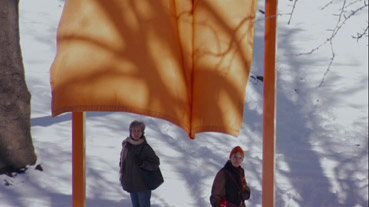
Can there be a devotee of documentary film anywhere who does not know and revere the names of Albert and David Maysles? The Maysles brothers were two of the pioneers of Direct Cinema, the American equivalent of the French-named Cinéma Vérité. If by some chance their names are new to you then read up on their work and their influence (pretty much every documentary you've seen in recent years owes a debt to them and their contemporaries), and sit yourself down in front of Gimmee Shelter and Grey Gardens and anything else of theirs that you can get your hands on. If you're in a hurry to read on then you'll find a quick overview of their work and influence in our review of Salesman, the film that really put them on the documentary map.
The Maysles have a long-standing working relationship with Christo and Jeanne-Claude, starting in 1974 with the Oscar-nominated Christo's Valley Curtain, which they followed in 1977 with Running Fence, and later in 1990 with Christo in Paris and in 1994 with Umbrellas, films that documented individual works by the artists. Thus, in 1979 when they began work on The Gates, the expectation was that this would be the third film in what was already shaping up into a themed series. When the project was rejected, the shot film was put into storage and revived and restored for inclusion here by co-director and editor Antonio Ferrera.
This early footage provides sort of background detail that no retrospective interview can come close to matching, capturing as it does, in that intimate observational manner that the Maysles had honed to a fine art, both the determination of the artists and the vocal resistance of those whose opinions ultimately stalled the project. It's not hard to find yourself quickly siding with the artists' position – the proposed artwork is designed to be temporary, will be completely self-funded and will in no way harm the area in which it sits, and yet the reaction it provokes ranges from uncertain to the openly hostile. Such objections continue in 2005 once the project has finally been given the go-ahead (the hop between timelines is neatly executed through a recollection of events and the sound operator executing mic-taps for synchronisation), where the couple's work is dismissed by self-satisfied TV presenters and the industrial preparations for its instillation prompt hostile reactions from passers-by, condemned by one as "absolutely deplorable" and likened by another to him taking a crap on the filmmakers' lawn. Not everyone is so bad tempered about the work – in a delightfully caught moment, one visitor cheerfully admits to mistaking one of the heavy metal bases in which the gates will be secured for the finished piece.
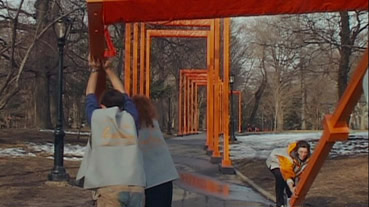
Once the go-ahead is given, the process of installing the gates proves a relatively straightforward task. The scale of the piece and the materials used make the process look like a construction project, complete with safety-helmeted workers and industrial machinery, a likely reason for some of the negative comments from the park's regular users. Indeed, before the curtains are officially unfurled, the steel gates themselves are incongruous to their surroundings and not that attractive, which may well have been at least partially responsible for Christo's paranoia that they would be vandalised on the night before the official opening, a ceremonial affair that draws a sizeable and enthusiastic audience.
And it's here that the film takes its riskiest and most audacious step. We've journeyed with the project through refusal and approval, listened to the arguments both for and against, watched over the extraordinary process of its creation and seen it launched to enthusiastic public approval. And yet we're only an hour into a ninety-four minute documentary. The story has been told, complete with conflict, dashed hopes and a happy ending – what could that final third of the film possibly consist of? Believe it or not – and despite having watched it twice even I have trouble doing so – that last half-hour consists solely of public reaction to the finished piece. And it's never boring or repetitive, constantly surprising, and really rather wonderful.
Co-directors and cinematographers Albert Maysles (his brother David passed away in 1987 and thus never saw the film to completion) and Antonio Ferrera have an astonishing eye for facial close-ups, and through a process of what we can assume was sheer dogged persistence they capture a string of priceless responses: a woman enthuses into her phone and urges a friend to come down and see it; a group of kids liken it to a gigantic worm; a young man claims it was inspired by an urban myth of his own invention, inviting the good-natured mockery of friends who have clearly heard him spout this sort of thing before; a woman finds the sound of the curtains in the wind somehow reassuring in troubled times; a man compares the network of red and orange gates to vessels bringing good blood and energy to the park; an expressive local tells Christo the cost was justified because the work feeds the soul. There are so many more. The filmmakers also capture The Gates themselves with sometimes breathtaking beauty from an astonishing variety of viewpoints and lighting conditions, the arrival of snow transforming the landscape into an entirely new canvas, one that brings the red of the gates and the vibrant orange of the curtains into even sharper focus.
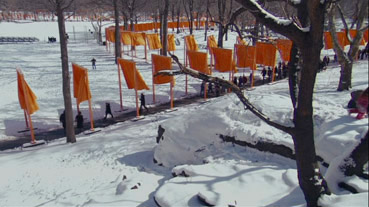
For those who come to the park (there were over four million visitors during the two weeks of the installation's existence) the work clearly has a profound effect and appears to be one that stays with them – just this week I was talking to an American art lecturer about this very film, and the moment I mentioned the subject matter her face lit up. "The Christo piece!" she remarked with enthusiasm. "I saw it! It was amazing!" Of course, what it actually felt like be there is something not even this extraordinary film is able to fully replicate, but it does vividly capture the emotional response of those who experienced it on our behalf, and in the process allows us to feel as if we attended by a kind of artistic proxy. I'm fully aware that aspects of the narrative has been carefully shaped in the editing (it's hard to believe that the filmmakers didn't capture just a couple of post-opening negative responses to the piece, or that everyone they approached during the process of its construction was as negative as those selected for inclusion), but this in no way detracts from what has to rank as quite possibly the finest, most absorbing and exquisitely crafted documentary on the creation of a single artwork that I have ever seen.
Given the timespan of the film's production it will likely come as no surprise that it was filmed on more than one format. The early material was shot by Albert Maysles on 25fps 16mm film, while the newer footage consists of a combination of PAL DV-CAM shot on a Sony DSR-PD170 and HD footage shot with a Panasonic VariCam. Restoring the film elements and matching it to the newer footage for its American TV broadcast was down to co-director, co-cinematographer and editor Antonio Ferrera and some nifty mathematical calculations in Apple's Final Cut Pro editing software. The results definitely justify his considerable work, for while it's easy for a trained eye to identify which footage was shot on which format, the differences in image quality are far less pronounced than you might expect. The older 16mm material in particular looks far better than reports of the poor condition in which Ferrera first encountered it might suggest – the colours may be muted and a little earthy, but the level of detail is very good, the grain is minimal and the image is virtually spotless. The DV-CAM material in some ways presents the biggest challenge, being shot on PAL for the higher line count and greater picture detail, then converted to NTSC for its HBO broadcast, a journey it survives rather well well. Inevitably it's the HD footage that shines the brightest, with pitch-perfect contrast, crisp detail and a rich reproduction of colour. A first-class job that is being distributed here in its original NTSC form rather than risk the damaging effects of standards conversion.
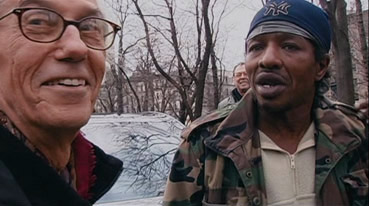
The soundtrack is coded as Dolby 5.1 surround, but you'll hear precious little from the rear speakers, which matters little when the sound is as well recorded and mixed as it is here – even the older 16mm footage has excellent dialogue recording (courtesy of David Maysles), and the various music tracks make good use of the stereo separation and really show off the clarity.
Four similarly styled scrolling textual extras are included, providing brief overviews of the project itself and the work of Antonio Ferrera, Albert Maysles and Christo and Jeanne-Claude.
Usually this is where I'd be suggesting that those with a professed dislike for modern art in any of its guises should give the film a wide berth, but as it happens they're the very people I'd most enthusiastically encourage to watch it. They may not like what Christo and Jeanne-Claude create (but give it a try, you never know) or even regard it as art at all, but they should see it anyway to appreciate the sheer work and time that goes into creating such an artwork and the joy the finished piece can bring to those who actually experience it. Distributed in the US by Alive Mind and handled here by Illuminations, this is a marvellous documentary given a top notch transfer, and comes highly recommended.
|